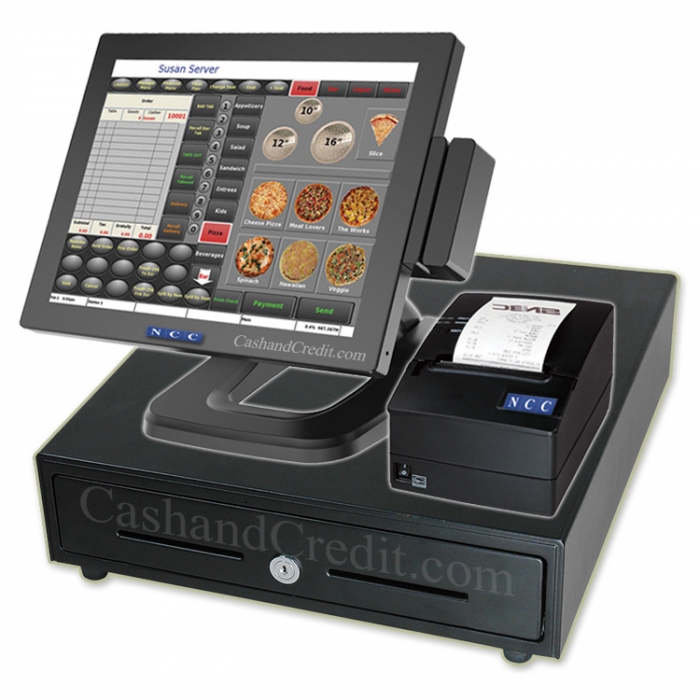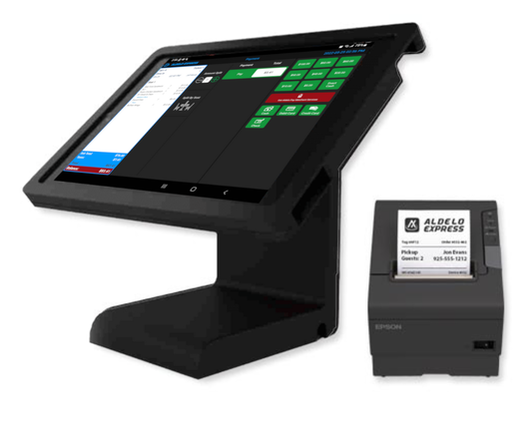Your top questions answered about Restaurant POS Software
Wiki Article
Exactly How POS System Works: A Comprehensive Guide for Entrepreneur
A POS system acts as a crucial device for modern services, integrating various components to streamline procedures. It includes hardware like barcode scanners and software application offer for sale monitoring. This system not just processes transactions yet likewise handles inventory and assesses consumer habits. Understanding its capability can substantially affect a company's efficiency and decision-making. What are the crucial elements that contribute to this effectiveness? Discovering these elements provides valuable understandings.Understanding the Elements of a POS System
A Factor of Sale (POS) system is composed of numerous essential components that function together to facilitate deals and handle business procedures. At its core, the hardware includes tools such as a sales register, barcode scanner, receipt printer, and payment incurable, all necessary for processing sales (Restaurant POS Software). The software component takes care of stock, sales tracking, and client data, giving beneficial insights for business decisions.Additionally, data sources store deal documents and consumer information, making sure data stability and security. Network connectivity makes it possible for real-time updates and access to cloud-based solutions, improving functional efficiency. Interface, created for ease of usage, permit team to browse the system rapidly, decreasing training time. With each other, these components create a cohesive system that enhances the sales procedure, boosts customer care, and help in efficient monitoring of organization resources. Understanding these components is vital for entrepreneur seeking to enhance their POS systemsExactly How Sales Deals Are Refined
When a consumer determines to make an acquisition, the sales purchase launches a collection of organized actions within the POS system. Initially, the cashier inputs the products being bought, which are checked through a barcode reader or manually gone into. This activity recovers product information, including pricing and relevant taxes, from the system's database.Next, the customer exists with the overall quantity due. The POS system after that refines the payment, whether via cash, credit score card, or mobile payment methods. For electronic settlements, the POS safely connects with settlement cpus to accredit and confirm the transaction.Once the settlement is validated, the system produces a receipt, which can be published or sent out electronically. This invoice acts as proof of acquisition for the client. The transaction information is recorded in the system, making certain accurate sales documents and financial monitoring for the business.Stock Management and Monitoring
Effective stock management and tracking are important elements of a POS system, as they guarantee that services preserve excellent stock degrees and reduce disparities. A robust POS system permits for real-time inventory updates, mirroring sales and returns instantly. This makes it possible for local business owner to keep an eye on supply levels properly, making sure that preferred products are readily available while preventing overstocking of less preferred products.Additionally, advanced POS systems use features such as automated supply informs and reorder suggestions, improving the purchase process. Barcoding and RFID modern technology improve precision in tracking inventory motion, reducing human error. Substantial coverage tools supply understandings right into supply turnover prices, aiding companies make notified choices regarding buying and item offerings. Eventually, efficient supply management with a POS system not only enhances operational efficiency however additionally boosts client contentment by ensuring item schedule.
Examining Customer Data and Insights
Consumer data evaluation works as a powerful tool for organizations utilizing a POS system. By gathering and examining deal information, businesses can discover beneficial insights regarding consumer actions and preferences. This analysis enables them to determine acquiring trends, peak buying times, and prominent items, therefore informing inventory decisions and advertising and marketing strategies.Additionally, businesses can segment their client base, enabling for individualized advertising and marketing initiatives that accommodate particular demographics or buying behaviors. Understanding customer loyalty patterns likewise assists in creating targeted promos and incentives programs.The data gleaned from a POS system can also expose insights into client comments, allowing services to make educated choices pertaining to product offerings and service enhancements. Inevitably, leveraging consumer information effectively can enhance the overall shopping experience, foster consumer fulfillment, and drive income growth.
Advantages of Carrying Out a POS System
Carrying out a POS system provides various benefits that can considerably improve company operations. To start with, it enhances transaction procedures, reducing delay times and enhancing consumer fulfillment. By automating sales processes, services can minimize human error and warranty accurate record-keeping. Additionally, a POS system gives important information analytics, enabling owners to track sales patterns and supply levels in real-time. This insight supports educated decision-making, aiding to optimize stock administration and advertising and marketing strategies.Moreover, many POS systems integrate with other service devices, such as accounting software application, streamlining economic monitoring. Boosted employee management functions, such as tracking hours and efficiency, additional add to functional efficiency.Lastly, the execution of a POS system can lead to increased income with enhanced consumer experiences and critical understandings, inevitably fostering business growth and sustainability.
Frequently Asked Questions
What Types of Companies Can Take Advantage Of a POS System?

Just how much Does a POS System Usually Cost?
The expense of a POS system typically varies from a few hundred to a number of thousand bucks, depending upon attributes, hardware, and software program - Restaurant POS Software. Companies have to think about recurring fees for maintenance, assistance, and transaction processing when budgeting
Can I Incorporate a POS System With Existing Software?
Incorporating a POS system with existing software application is typically practical. Lots of systems provide APIs or built-in compatibility attributes, permitting click here for more services to improve operations and boost performance by connecting numerous software program applications successfully.What Training Is Required for Team to Utilize a POS System?
Training for team to utilize a POS system generally consists of understanding software application functionalities, refining deals, managing supply, and dealing with customer communications - Restaurant directory POS Software. Practical presentations and hands-on practice sessions improve proficiency and self-confidence in utilizing the system properlyWhat Occurs if the Net Decreases While Using a POS System?
If the why not find out more web drops during POS system use, deals might be interrupted. Several systems provide offline capacities, allowing standard operations to continue, yet full capability, including real-time supply updates, will be restricted.Report this wiki page